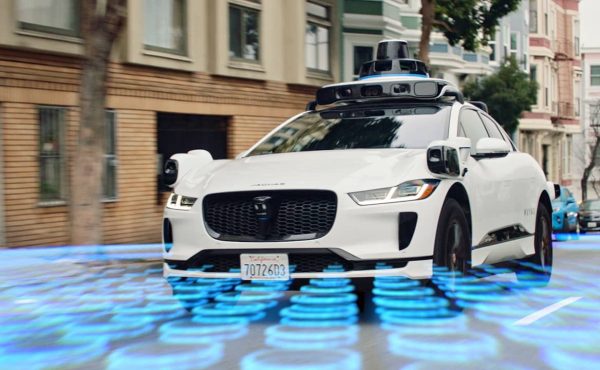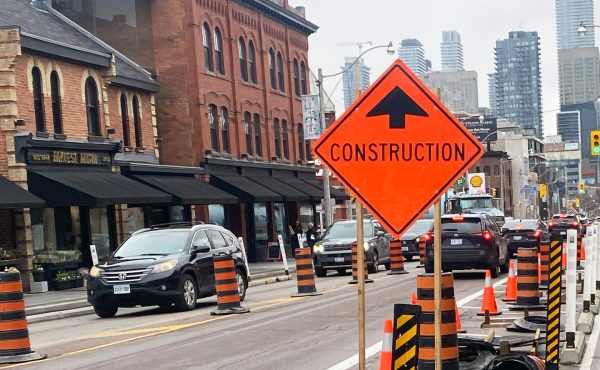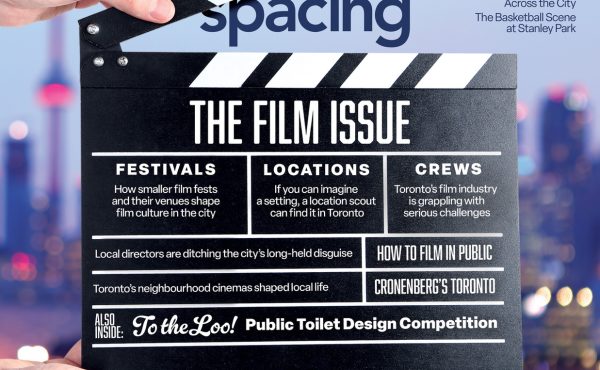
The TTC is considering turning two or three streetcars into one long “coupled” vehicle along the King Street streetcar route. The high-foreheads at the TTC believe that this contraption would help keep streetcars running on time and move people more effectively. I like that the TTC is considering some out-of-the-box thinking. Personally, I have no idea if this is a good plan or just a smoke-screen by the TTC to make it look like they are serving us better.
From the Toronto Star article:
The demand is increasing, and we’ve been putting more and more streetcars on King St., but we’re not carrying any more people,” says TTC manager of service planning Mitch Stambler. “It’s not because the people aren’t there. It’s because we can’t carry more people because the streetcars are getting bunched up, and stuck in traffic. “You couldn’t find another streetcar line in the world that’s trying to run every two minutes in mixed traffic.”
So the TTC commissioned a report from Amer Shalaby, a public transit planner at IntelliCAN Transportation Systems Inc., to find out what would happen if the TTC coupled two or three streetcars together and operated them four minutes apart instead of two. Shalaby ran an intricate computer model, taking into account actual traffic and commuter counts as well as human behavioural pattern.
But transit critic Steve Munro seems less impressed by this scheme. He is able to pick apart some of the murky facts about schedules and number of vehicles in use on King Street. Read his full length post after reading the Star‘s article.
This is the second example of how the TTC just doesn’t get it about King Street service. The first was a proposal for a transit mall stretching through all of downtown and possibly beyond. If King were awash in streetcars, we might have a case for some sort of reservation, let alone kicking most other traffic off of the street. We cannot justify this for a service that runs no more than every 4 minutes except in the morning rush hour when, by the way, traffic congestion is not an issue.
UPDATE: James Bow of Transit Toronto added this the discussion:
This arrangement is no different from the multiple-unit (MU) operation experienced on the Bloor-Danforth streetcar line during its last years of operation, or on the Queen streetcar during the late sixties and early-to-mid seventies. The theory goes that, when service is frequent, coupling streetcars together can improve service by allowing two cars to proceed through an intersection as if they are one vehicle. This reduces the chance that individual vehicles can get stuck behind a red light.
The CLRV streetcars do not have couplers. Though they were delivered with them, mechanical issues limited their use, and the TTC soured on multiple-unit operation. Safety concerns about the couplers sticking out in front of the streetcars eventually led to their removal by the mid eighties. If this proposal is to be implemented, it can only be after new couplers are installed, possibly during the planned rebuild of 100 CLRVs in the fleet.
Personally, if the TTC wishes to add more service to King Street, they should add more service. If they believe that they cannot top CLRVs operating at two-minute intervals on King Street, then operate ALRVs instead, at those same intervals. Take the ALRVs off of 501 Queen and replace service there with CLRVs. King cars would then have extra capacity to handle the crowds, and Queen passengers would benefit by having shorter streetcars arriving at their stops more frequently.




5 comments
It looks like the TTC is about to screw up the service on King Street. What I mean is make it more inferior, as in quality, condition, or effect. I remember Bloor Danforth before the subway opened. They used to run multiple unit streetcars along those roads and the service had the same problems. In fact people used to jam into the lead car leaving the trailer with plenty of space. Toronto needs more subways and less streetcars. Read more at my blog… http://busdriverofdurham.blogspot.com/
This arrangement is no different from the multiple-unit (MU) operation experienced on the Bloor-Danforth streetcar line during its last years of operation, or on the Queen streetcar during the late sixties and early-to-mid seventies. The theory goes that, when service is frequent, coupling streetcars together can improve service by allowing two cars to proceed through an intersection as if they are one vehicle. This reduces the chance that individual vehicles can get stuck behind a red light.
The CLRV streetcars do not have couplers. Though they were delivered with them, mechanical issues limited their use, and the TTC soured on multiple-unit operation. Safety concerns about the couplers sticking out in front of the streetcars eventually led to their removal by the mid eighties. If this proposal is to be implemented, it can only be after new couplers are installed, possibly during the planned rebuild of 100 CLRVs in the fleet.
Personally, if the TTC wishes to add more service to King Street, they should add more service. If they believe that they cannot top CLRVs operating at two-minute intervals on King Street, then operate ALRVs instead, at those same intervals. Take the ALRVs off of 501 Queen and replace service there with CLRVs. King cars would then have extra capacity to handle the crowds, and Queen passengers would benefit by having shorter streetcars arriving at their stops more frequently.
i like the image you put together for this post
There seems to be a system wide problem with they way buses and streetcars are scheduled and run on their routes. I’m a rider, not a transit expert so some of this might be my mis-understanding they way things work but the end result is the same.
I understand that buses and streetcars leave the start of the run at a specific time and have a device which tells the driver if he is running fast or slow.
My question is, why are buses and streetcars getting bunched up and running together in the first place?
I live near the top of the Dufferin bus (by the 401) and it is very frustrating to see 3 or 4 busses come flying by one right after the other while I’m waiting for the light to cross the street and when I do get across the street, the next bus doesn’t come for 10 minutes or more.
I believe that buses and streetcars should operate similarly to their subway counterparts. They should stay on time and at some pre-determined distance behind the bus ahead of them. If they are running ahead of schedule or the bus ahead has not moved on they should stop and wait for a minute.
In addition, on some lines such as the Eglinton West line, the buses are packed AT THE FRONT but almost empty at the back. Part of this is caused by the driver not staying at an intersection long enough for riders to feel comfortable enough to move back.
Drivers need cameras or other feedback to tell them how packed the bus is and they need to stop and stay long enough for people to move back before the bus starts moving again.
I think it would help in many ways if they would stop running 2 or 3 buses in succession and then no buses for several minutes.
Passengers should use the rear door to exit buses. There would then be no need to crowd the front of the bus as it approaches your stop.
Virtual coupling or defacto green extension signal preemption. A second streetcar ready to proceed closely follows the first through the intersection after the light has changed.
Quasi-express. Selected stops are designated as express stops, most are local stops. In the event of a bunch up, passengers wighing to get off at one of the next few stops must get off of a “lead” car at an express stop and freely board (toothless honor system) a “following” car. The lead car then reserves the right to not stop at a number of following local stops, this most likely occurring when the traffic light just ahead has been green for awhile (has a stale green).